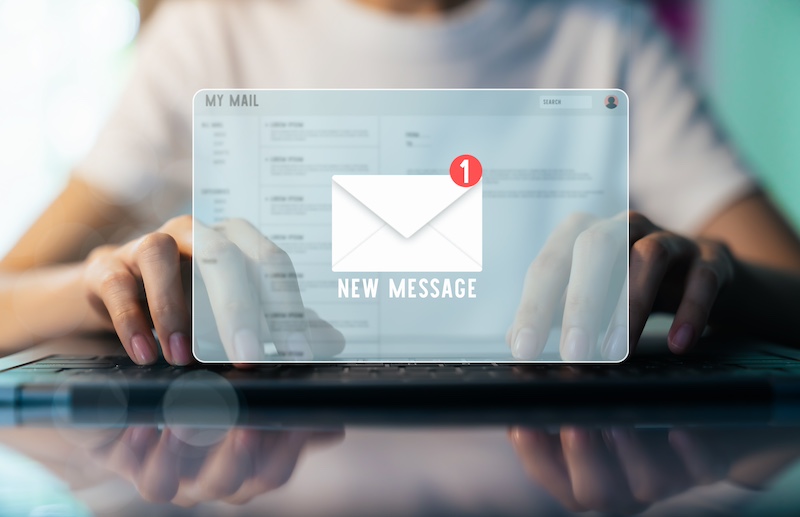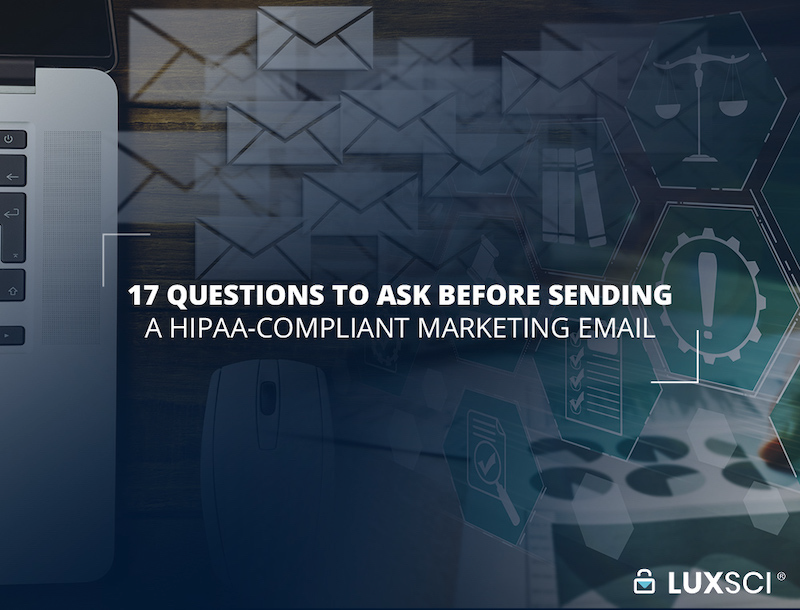6 Email Marketing Best Practices for Healthcare
Friday, February 14th, 2025Email marketing can be a powerful tool for healthcare organizations, but it requires careful planning and execution because of compliance requirements for HIPAA marketing. In this blog post, we will discuss email marketing best practices to help healthcare marketers achieve their goals.
1. Define Your Campaign Goals
The success of any email marketing campaign depends on the goals you want to achieve. However, because healthcare organizations are often not selling products to their patients, marketers can be confused about how to set measurable goals for their campaigns that aren’t tied to revenue generation.
Healthcare marketers can use email marketing campaigns for various purposes, including patient engagement, education, new product or service offerings, and retention. Some possible objectives of your campaigns could be:
- New patient acquisition
- Re-engaging lapsed patients
- Spreading awareness about vaccines, treatments, or medical conditions
- Increasing treatment or medication adherence
- Collecting survey responses or patient-reported outcomes
All of these campaign objectives will correlate with different metrics. Identifying the campaign goal and the corresponding metrics you need to track is critical before selecting the audience and crafting the content.
2. Select Your Audience
Gone are the days of sending giant email blasts to your entire contact list. The best email marketers are creating highly targeted campaigns for specific audiences. Healthcare marketers using patient data in their audience targeting efforts are at an advantage. They can use patient information to create distinct audience segments. Targeting a patient population with common attributes makes it easier to craft a relevant message to drive clear results. For example, marketers can create more relevant campaigns when they can divide their patient population into subgroups based on shared characteristics like diagnoses, risk factors, and demographic data.
3. Personalize Your Content
Once you have clearly defined your goal and your audience, it’s essential to use personalization techniques to craft relevant messaging. Healthcare consumers expect more personalization from their providers and want to receive messages that tie into their past experiences. Generic, irrelevant messaging is more likely to annoy patients than get them to act. Healthcare marketers are lucky to have a wealth of data points to use in their messaging, but they must be aware of patient privacy and take steps to secure PHI in their messaging. When you have taken the appropriate steps to secure patient data, including protected health information in email messages is possible. This improves the patient experience and makes it easier for healthcare marketers to achieve their objectives.
4. Use A Clear Call-to-Action
Your emails should include a clear call-to-action (CTA) that encourages your audience to take the desired action. These actions may include scheduling an appointment, downloading a resource, logging into a patient portal, filling out a survey, or contacting your organization. Ensure that your CTA is prominent, stands out from the rest of your content, and ties back to the goal of your campaign. Most importantly, implement appropriate tracking technologies so you can see how many email recipients followed through on the CTA.
Don’t include too many calls to action in one message! Including multiple prompts may confuse the recipient and make it more difficult for your team to understand how the campaign performed.
5. Review Your Data
Finally, it’s essential to monitor your email metrics to evaluate the success of your campaigns. Some key metrics may include open rates, click-through rates, deliverability, surveys completed, successful logins, appointments scheduled, and other relevant metrics that tie back to your goals. Use this data to refine your email marketing strategy, trigger follow-up campaigns and marketing activity, and optimize future campaigns. Use APIs or webhooks to ensure your email campaign statistics are tied into marketing dashboards to get a holistic view of how your campaigns are performing.
6. Choose an Email Marketing Solution Designed for Healthcare
Finally, to use the tactics recommended above, it’s necessary to use a HIPAA-compliant email marketing solution. Segmenting audiences and personalizing content requires the use of protected health information. Therefore, it must be secured in compliance with HIPAA requirements. Also, make sure you select a platform that can protect data both at rest and in transit to utilize the power of your data fully.
LuxSci’s HIPAA compliant email marketing solution was designed to meet the needs of healthcare marketers and enables the use of PHI at scale. Contact our sales team to learn more about our capabilities and email marketing best practices.









